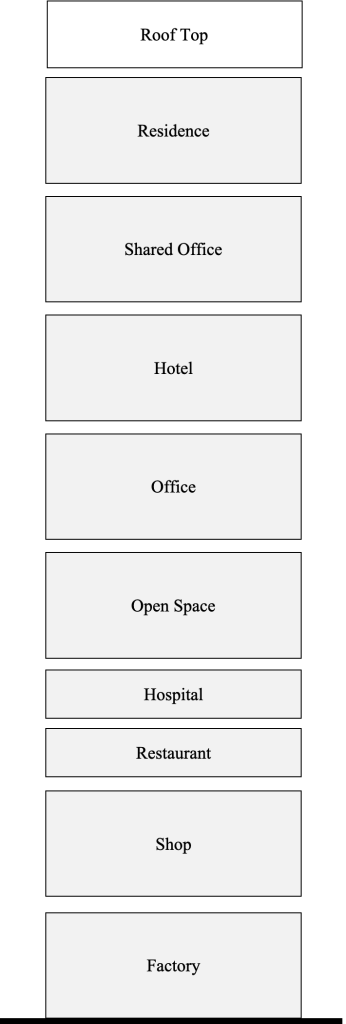ESG strategy
In today’s business landscape, the concept of ESG (Environmental, Social, and Governance) strategy has become increasingly significant. This framework helps companies integrate sustainable and ethical practices into their operations, ensuring long-term value creation and risk mitigation. Let’s delve into what an ESG strategy entails and why it’s crucial for modern businesses.
What is ESG
Environmental: The environmental component of ESG focuses on how a company impacts the planet. This includes efforts to reduce carbon footprints, manage waste, and conserve natural resources. Companies might invest in renewable energy, implement energy-efficient processes, and adopt sustainable supply chain practices. By doing so, they not only contribute to environmental preservation but also often realize cost savings and operational efficiencies.
Social: The social aspect addresses how a company manages relationships with employees, suppliers, customers, and communities. Key areas include fair labor practices, diversity and inclusion, and community engagement. Companies with strong social strategies often see improved employee morale and productivity, better customer loyalty, and enhanced brand reputation. For instance, promoting diversity and inclusion can lead to a more innovative and dynamic workforce.
Governance: Governance involves the internal systems and controls that ensure a company operates ethically and transparently. This includes board diversity, executive compensation, and shareholder rights. Effective governance practices help build trust with investors and other stakeholders, ensuring that the company is managed in a way that aligns with their interests. Transparent reporting and accountability are critical components of good governance.
Why ESG Matters
Adopting an ESG strategy is not just about compliance or public relations. It is about building a resilient business that can thrive in the long term. Investors are increasingly looking at ESG factors when making investment decisions, recognizing that companies with strong ESG performance are often better managed and less risky. Additionally, consumers are more likely to support brands that align with their values, making ESG a key driver of customer loyalty.
In conclusion, an ESG strategy is essential for companies aiming to navigate the complexities of today’s business environment. By focusing on environmental sustainability, social responsibility, and robust governance, businesses can create lasting value for all stakeholders while contributing positively to society and the planet.
Social Responsibility
Social sustainability involves managing relationships with employees, customers, suppliers, and communities in an ethical and equitable manner. Key areas include promoting fair labor practices, ensuring diversity and inclusion, and engaging in community development. Companies with strong social strategies tend to enjoy higher employee morale, better customer loyalty, and a stronger brand reputation. For example, fostering a diverse and inclusive workplace can lead to greater innovation and a more dynamic organizational culture.
Sustainability strategy
Crafting a Sustainability Strategy: Building a Better Future
In an era where environmental concerns and social responsibility are at the forefront, businesses are increasingly adopting sustainability strategies to ensure long-term success and positive impact. A sustainability strategy is a comprehensive plan that integrates environmental, social, and economic considerations into a company’s operations and decision-making processes. Here’s a closer look at what a sustainability strategy entails and why it’s essential for modern businesses.
Environmental Sustainability: This aspect focuses on minimizing the negative impact of business activities on the environment. Companies aim to reduce their carbon footprint, manage waste effectively, and conserve natural resources. Initiatives might include investing in renewable energy, enhancing energy efficiency, and adopting sustainable supply chain practices. By prioritizing environmental sustainability, businesses not only contribute to the health of the planet but also often achieve cost savings and operational efficiencies.
Economic Viability: A sustainability strategy also considers the economic aspects of business operations. This means ensuring that sustainability initiatives are financially viable and contribute to the long-term profitability of the company. By integrating sustainability into their core business strategies, companies can identify new market opportunities, enhance their competitive advantage, and attract investment. Sustainable practices can lead to cost reductions, improved risk management, and increased resilience against market fluctuations.
Governance and Transparency: Effective governance is crucial for the successful implementation of a sustainability strategy. This involves establishing clear policies, setting measurable goals, and ensuring accountability through transparent reporting. Companies need to engage stakeholders, including investors, customers, and employees, in their sustainability efforts. Transparent communication about sustainability goals and progress helps build trust and demonstrates a company’s commitment to ethical practices.
Why It Matters: Adopting a sustainability strategy is not just about compliance or enhancing public image. It is about creating a resilient business that can thrive in the long term. Investors are increasingly considering sustainability factors when making investment decisions, recognizing that companies with strong sustainability performance are often better managed and less risky. Additionally, consumers are more likely to support brands that align with their values, making sustainability a key driver of customer loyalty.
In conclusion, a well-crafted sustainability strategy is essential for companies aiming to navigate the complexities of today’s business environment. By focusing on environmental sustainability, social responsibility, economic viability, and robust governance, businesses can create lasting value for all stakeholders while contributing positively to society and the planet.
Sustainable Competitive Advantage
A sustainable competitive advantage is a unique edge that allows a company to outperform its competitors consistently over time. This advantage is hard for others to replicate and can be based on factors like unique products, cost efficiency, strong brand reputation, or superior customer service. It ensures long-term profitability, market dominance, and customer loyalty.
CSR strategy
Corporate Social Responsibility (CSR) strategy is a comprehensive plan that companies use to operate in an ethical and sustainable manner while fulfilling their responsibilities towards society, the environment, and their stakeholders. This strategy is essential for businesses aiming to create a positive impact beyond their financial performance. Let’s explore what a CSR strategy entails and why it is crucial for modern enterprises.
Defining CSR Strategy: A CSR strategy encompasses a company’s goals, values, and initiatives related to responsible business practices. It involves integrating social, environmental, and economic considerations into the core business operations. The aim is to ensure that the company not only pursues profitability but also contributes positively to society and the planet12.
Key Components of CSR Strategy:
- Environmental Responsibility: This involves efforts to minimize the negative impact of business activities on the environment. Companies focus on reducing carbon footprints, managing waste, and conserving natural resources. Initiatives might include using renewable energy, enhancing energy efficiency, and adopting sustainable supply chain practices12.
- Social Responsibility: Social responsibility addresses how a company manages relationships with employees, customers, suppliers, and communities. Key areas include fair labor practices, diversity and inclusion, and community engagement. Companies with strong social strategies often see improved employee morale, better customer loyalty, and enhanced brand reputation23.
- Ethical Responsibility: This involves ensuring that the company operates in a fair and ethical manner. It includes promoting equitable work environments, maintaining ethical behavior in all stakeholder relationships, and ensuring that business practices do not harm society. Examples include fair trade practices, comprehensive employee benefits, and ethical sourcing of materials23.
- Economic Responsibility: Economic responsibility ensures that the company’s financial decisions positively impact society and the environment. This includes investing in sustainable practices, supporting charitable causes, and ensuring that economic activities contribute to the overall well-being of society23.
Benefits of CSR Strategy:
- Enhanced Brand Reputation: Companies that actively engage in CSR initiatives often enjoy a stronger brand reputation and increased customer loyalty12.
- Attracting Talent: A robust CSR strategy can attract and retain employees who value ethical and sustainable business practices2.
- Investor Appeal: Investors are increasingly looking at CSR factors when making investment decisions, recognizing that companies with strong CSR performance are often better managed and less risky12.
- Long-Term Profitability: By integrating CSR into their core strategies, companies can identify new market opportunities, enhance their competitive advantage, and ensure long-term profitability2.
Implementing CSR Strategy: To implement a successful CSR strategy, companies should start by defining their purpose and aligning their CSR goals with their business objectives. Engaging stakeholders, setting measurable goals, and tracking progress are crucial steps. Transparent communication about CSR efforts helps build trust and demonstrates the company’s commitment to responsible practices12.
In conclusion, a well-crafted CSR strategy is essential for companies aiming to navigate the complexities of today’s business environment. By focusing on environmental, social, ethical, and economic responsibilities, businesses can create lasting value for all stakeholders while contributing positively to society and the planet.Would you like to explore specific examples of companies with successful CSR strategies?
1: IMD Business School 2: Harvard Business School Online 3: Submittable
Diversification strategy
A diversification strategy is a business approach that involves expanding a company’s operations by entering new markets or introducing new products. This strategy aims to reduce dependence on existing markets or products and spread risk across multiple areas, thereby enhancing growth potential and profitability. Let’s delve into the key aspects of diversification strategy and its significance for businesses.
Defining Diversification Strategy: Diversification strategy is one of the four main growth strategies identified by Igor Ansoff in 1957. It involves launching new products in new markets, which can help companies identify new opportunities, boost profits, increase sales revenue, and expand market share12. This strategy is particularly useful for businesses looking to mitigate risks associated with market saturation or economic downturns in their primary industry.
Types of Diversification Strategies:
- Concentric Diversification: This involves adding new products that are related to the existing product line but appeal to new customer segments. For example, a computer manufacturer might start producing tablets, leveraging its existing technology and market knowledge2.
- Horizontal Diversification: This strategy entails introducing new products that are unrelated to the current product line but may meet the needs of existing customers. For instance, a company that manufactures electronics might start offering home appliances2.
- Conglomerate Diversification: This involves entering entirely new markets with new products that are unrelated to the company’s existing business. An example is a food company starting a clothing line. This type of diversification is the riskiest but can offer significant growth opportunities if successful2.
Benefits of Diversification Strategy:
- Risk Reduction: By spreading investments across different markets and products, companies can reduce their exposure to risks associated with any single market or product1.
- Revenue Growth: Diversification can open up new revenue streams, helping companies achieve higher profitability and market share2.
- Competitive Advantage: Entering new markets or offering new products can give companies a competitive edge, making it harder for competitors to match their offerings2.
Challenges of Diversification Strategy:
- High Risk: Diversification, especially into unrelated markets, involves significant risk due to the lack of experience and knowledge in the new market1.
- Resource Allocation: Diversification requires substantial investment in terms of time, money, and human resources, which can strain the company’s existing operations2.
- Market Research: Thorough market research is essential to understand the new market’s dynamics and customer preferences, which can be time-consuming and costly2.
Implementing Diversification Strategy: To successfully implement a diversification strategy, companies should start with comprehensive market research to identify potential opportunities and risks. Developing a clear plan that aligns with the company’s overall goals and capabilities is crucial. Additionally, companies should ensure they have the necessary resources and expertise to support the new ventures2.
In conclusion, a diversification strategy can be a powerful tool for businesses seeking growth and risk mitigation. By carefully planning and executing this strategy, companies can explore new markets, enhance their competitive position, and achieve long-term success.
Would you like to explore examples of companies that have successfully implemented diversification strategies?
1: Lighter Capital 2: Wall Street Mojo
SASAL, INC Supports
| No | Type | Title | Output | Term | Cost |
|---|---|---|---|---|---|
| 1 | Strategy | Basic Vision Information Share | 2month | $60,000 | |
| 2 | Visiton Negotiation | 3month | $90,000 | ||
| 3 | long-term management plan | 2month | $60,000 | ||
| Total | 7 month | $210,000 |
- In this service all the information is written in PPT for sharing the information in your corporation.
- The meeting is estimated to be at least 1 per week and at most 1 per day. SASAL can follow clients’ pace.
When you would like to start from a small budget, SASAL INC is able to support by counselor service. Please feel free to contact us. Thank you.
Articles
Who publish the world data as a government organization?
What kinds of search engine in the world
What is the Sector?
No post found








